Weather Reporting System Using Internet Of Things
Dhanshri Chaudhari 1 , Sonali Ajankar21Student, Master of Computer Applications, VJTI, Mumbai, Maharashtra, India

2Assistant Professor, Master of Computer Applications, VJTI, Mumbai, Maharashtra, India

Abstract - Weather forecasting plays a pivotal role in various sectors, influencing decisions in agriculture, transportation, disaster management, and more. In this research paper, we propose a sophisticated online weather reporting system based on the Internet of Things (IoT) to forecast the atmosphere's state at specific locations and times. This system allows for the real-time detection, recording, and display of essential weather factors, such as temperature, humidity, rainfall, and moisture. The heart of the project is a real-time database that securely stores collected weather data in the cloud, making it easily accessible tothe public. By analyzing the measured weather features specific to each location, we can assess the weather trend and gather crucial insights. Our proposed system executes predetermined operations based on current weather conditions and sensor readings. The data from sensors is efficiently displayed through the ESP8266's serial output, facilitating user interaction with the system. Through this research, we present a valuable contribution to weather forecasting and monitoring, supporting better decision-making processes across various sectors that rely onweatherinformation.
Keywords- IOT, ESP-01 ESP8266 , Weather station, Sensors,SmartEnvironment.
1.INTRODUCTION
In today's fast-paced and interconnected world, accurate and real-time weather forecasting is of paramount importance for various sectors ranging from agriculture andtransportationtodisastermanagement.Theadventof cutting-edge technology has revolutionized the field of meteorology, enabling the tracking and dissemination of localweatherdataglobally.Thisresearchpaperpresentsa pioneeringapproachtomonitorandshare meteorological conditions worldwide through the innovative use of the Internet of Things (IoT). The Internet of Things is a groundbreaking concept that seamlessly connects a myriadofdevicesandsensorsina vastnetwork,enabling them to communicate and exchange data. In this context, electronic devices, sensors, and even automotive electronics become essential components of the IoT ecosystem. Leveraging this technology, our proposed system employs a network of sensors to continuously monitor and regulate environmental factors such as temperature and relative humidity, providing real-time data accessible through a user-friendly website.
Traditionally, weather forecasting relied heavily on human observations, mainly focused on changes in rainfall and sky conditions.However,thefieldhasevolvedsignificantly,with computer-based models now playing a pivotal role in predicting weather patterns. Our proposed IoT-based weather reporting system empowers users to access meteorological parameters online without relying on externalweatherforecastingservices.Thesystemeffectively utilizes sensors for temperature, humidity, and rain measurement, providing continuous tracking of weather conditions and delivering real-time data reporting. Data collected by rain and temperature sensors is relayed to a microcontroller,whichinterpretsandtransmitsit througha Wi-Ficonnectiontoanonlinewebserver.Inconclusion,this research paper introduces an innovative IoT-based weather reporting system that revolutionizes the way we monitor, forecast,anddisseminatemeteorologicaldata.Bycombining cutting-edge technology with traditional forecasting methodologies,thissystemoffersareliableanduser-friendly platform for accessing real-time weather information, ultimately contributing to informed decision-making across variousdomains.
A. Role of IOT in Weather Reporting System
Weather forecasting is an essential and practical skill that significantlyimpactsvariousaspectsofhumanlife.Withthe advent of the Internet of Things (IoT) concept, the field of meteorology has witnessed remarkable advancements, transforming the way meteorological characteristics are sensed,recorded,andutilizedforreal-timealerts,appliance adjustments, long-term analysis, and notifications. In the IoT-based weather reporting system, a range of specialized instruments and sensors are employed to capture and processcriticalweatherdata.Thesesensorsaredesignedto monitor various aspects of weather and climate, such as temperature, humidity, wind speed, wetness, light intensity, UV radiation, and even airborne carbon monoxide levels. Thecollecteddata isthentransmittedtothecloud,whereit isfurtherprocessed,analyzed,andpresentedtousersinthe formofgraphicalstatistics.Furthermore,thevastamountof datacollectedovertimebytheIoT-basedweatherreporting system offers valuable insights for long-term weather analysis. This accumulated data can be utilized to study weather trends, climate patterns, and potential impacts of climatechangeonspecificregions.
Byfacilitatingin-depthanalysis,thissystemcontributesto the development of more accurate and reliable weather forecasting models, benefiting various sectors, including agriculture, transportation, tourism, and disaster management. In conclusion, the integration of IoT in weather reporting systems has revolutionized the way meteorological data is sensed, processed, and disseminated. Through the utilization of specialized sensors, cloud-based data storage, and user-friendly applications,thistechnologyenablesglobalaccesstorealtime weather information, empowering individuals and communities to make informed decisions and respond effectivelytoweatherchanges.
B. Why is an IoT-based weather monitoring system necessary?
AnIoT-basedweathermonitoringsystemisindispensable due to its ability to provide simple access from anywhere in the world to real-time local weather monitoring. Moreover,thesystemallowsforbothshort-andlong-term archiving of weather and environmental data, enabling researcherstostudychangesinweatherpatternsandgain insights into how locally produced climate change has impacted weather over time. This vast repository of historical weather data becomes a valuable resource for climate research and helps us comprehend the evolving climate and its potential implications. Additionally, the ease of deploying an IoT-based weather monitoring system for monitoring local atmospheric variables and microclimates is a significant advantage. This simplicity empowers various sectors, such as agriculture and disaster management, to harness accurate weather forecasting and prediction, facilitating proactive planning andresilience-buildingmeasures.Ultimately,anIoT-based weather monitoring system is necessary to foster global awareness, enhance preparedness, and ensure a sustainable future in the face of weather-related challenges.
2. LITERATURE REVIEW
The accurate prediction of rainfall is a pivotal challenge in meteorology, with potential implications for various sectors such as agriculture, water resource management, and disaster preparedness. Rainfall monitoring systems playa crucial roleincollecting essential informationabout moisture and temperature, enabling the production of graphicalrainfallmapsbasedoncurrentandpastreadings. Upon reviewing several papers in the field, it becomes apparent that none of them have addressed the specific combination of temperature and moisture parameters within an intertwined system that incorporates selectors formodifyingthesesettings.
While there is one research paper that explores the incorporation of multiple environmental conditions, there

remains a notable absence of citations related to the inclusion of selectors for customization. Thus, the main objective of this research is to develop a system that can effectively sense the key factors influencing rainfall formation and accurately predictrainfallwithminimalerrors,bridgingthegapinexisting literature.In conclusion, the literature review highlights the critical need for a rainfall prediction system that integrates temperature and moisture parameters with selectors for customization. By addressing this research gap, the proposed system aims to improve the accuracy of rainfall prediction, contributing to more effective water resource management, agriculture planning, and disaster preparedness. Moreover, historical soothsaying practices underscore the importance of advancingmodernmethodstoensurereliableandscientifically validated rainfall predictions, which can be vital for various applicationsanddecision-makingprocesses.
A. Related work

In the pursuit of creating an efficient and user-friendly IoT platformforweathermonitoring,severalrelevantworkshave beenundertaken,witha focusonintegratingvarioussensors andmicrocontrollers.Onesuchprominentdevelopmentisthe creation of the IoT platform ThingSpeak, which serves as a powerful tool for displaying detector data in real-time. The proposed research builds upon this foundation and delves into two primary sections: software development and hardware implementation. In the software development phase, the research encompasses critical aspects such as IoT coding, circuit schematic illustration, circuit simulation, and data accession. The objective is to ensure seamless communication between the sensors and microcontroller, facilitating the collection and analysis of data related to weather parameters, including temperature, moisture, rainfall, and air quality. On the other hand, the hardware implementation phase involves the creation of a prototype and circuit construction, aiming to establish a robust and functional weather monitoring system. The microcontroller chosenforthistaskistheESP32,whichwillefficientlyhandle all the data generated by the sensors. To enhance user experience and accessibility, the system will be made available through the ThingSpeak channel, offering an online platform for users to check and monitor weather conditions in real-time. In conclusion, the related work highlights the efforts and advancements in IoT-based weather monitoring systems,withanemphasisoncreatinganintegratedplatform fordisplayingreal-timeweatherdata.Theproposedresearch aims to build upon this foundation, encompassing both software development and hardware implementation, to createarobustandefficientweathermonitoringsystem.
By employing multiple sensors and a sophisticated microcontroller, the system endeavors to provide comprehensive weather information to users through online platforms and a dedicated android app, enhancing its accessibilityandusability
B. Existing System
The existing weather monitoring systems typically involve an array of sophisticated sensors, satellite imagery, and data processing units, enabling comprehensive data collectionacrosslargegeographicareas.Thesesystemscan monitor multiple weather parameters, including temperature,humidity,rainfall,windspeed,andairquality, among others. The collected data is often transmitted to central weather monitoring centers, where it is processed, analyzed, and disseminated to the public and relevant authoritiesfordecision-makingpurposes.Whilethesehighend devices serve critical roles in weather forecasting and disastermanagementonalargescale,theirimplementation for monitoring weather in a small region raises several challenges.Firstly,theinitialsetupandinstallationcostsof such systems can be prohibitively high for smaller communities or organizations with limited resources. Secondly, the maintenance and operational expenses required to sustain the continuous functionality of these complex systems may not be economically viable for a small region. As a result, the need for an alternative and practical weather monitoring system for small regions becomesapparent.Theproposedresearchaimstoaddress this gap by developing an IoT-based weather monitoring systemthatiscost-effective,easytodeploy,andtailoredto thespecificneedsofsmallerregions.
C. Problem Definition

The problem addressed in this research paper pertains to the absence of a practical and cost-effective weather monitoring system tailored for small regions. While highend devices for 24-hour weather monitoring are readily available, they are primarily designed and extensively used for recording weather conditions across vast areas, such as cities. However, implementing such systems for small regions becomes impractical due to the high maintenance costs and the extensive infrastructure required. The core of the system is the ESP8266 microcontroller, responsible for processing the sensor readings and saving them in a text file. This data can be further analyzed to generate weather forecasts and gain insights into weather patterns specific to the small region underconsideration.Inconclusion,theproblemdefinition for this research paper revolves around the need for an innovative weather monitoring system tailored for small regions.Byintegratingessentialweathersensors,utilizing theESP8266microcontroller,andprovidingreal-timedata visualization,theproposedsystemseekstobridgethegap inweathermonitoringcapabilitiesforsmallcommunities.
The research aims to empower small regions with accurate and localized weather information, facilitating informeddecision-making,andenhancingpreparednessin thefaceofchangingweatherconditions.
D. Problem Explanation
Thefocusofthisresearchpaperistoaddressthesignificance and challenges of automatically acquiring data on humidity and ambient temperature in our immediate environment. These measured factors play a pivotal role in understanding and responding to varying weather conditions, which differ from onelocationtoanother.The researchaims to designan intelligentandadaptivesystemthatcaneffectivelyrespondto current weather conditions and the real-time readings of humidity and temperature parameters. Specifically, the system is programmed to activate the heating system automatically when the temperature falls below the user-set values, ensuring a comfortable indoor environment. Conversely, when the temperature rises beyond the userdefined set values, signifying hot or humid conditions, the cooling system is triggered to maintain a comfortable and conducive atmosphere. The proposed solution aims to overcome the limitations of traditional weather monitoring systems, which often require manual adjustments and lack real-timeadaptability.Inconclusion,theproblemexplanation for this research paper centers around the need for an advanced weather monitoring system capable of automatically obtaining data on humidity and ambient temperatureinreal-time.
The research aims to develop an intelligent and adaptive system that can effectively regulate indoor environments basedonchangingweatherconditions.

E. Limitations
Itisimpossibletoimplementsuchasystemina tinyarea.
It'saweb-basedprogram.
Suchsystemshaveaveryhighmaintenancecostfora smallregion.
3. Proposed System
Our research proposes an innovative weather monitoring andanalysissystemthatutilizesmultiplesensorstomeasure various weather and environmental variables, such as temperature and humidity. The core of the system is the ESP8266 microcontroller, which processes the sensor readings and efficiently stores them in a Google Firebase databaseforfurtheranalysis.Toprovideuserswithreal-time updates, the collected readings are also displayed on an onboardLCDscreenforconvenientviewing.
By evaluating these sensor readings, we can determine the weather features specific to any given location and monitor the weather trend over time. These measured factors, which vary from place to region, play a pivotal role in accurate weather forecasting. To aid in weather analysis, the system tracks and records these essential specifications over time, facilitatingthecreationofweatherchartsforspecificregions.
These charts offer insights into past weather forecasts' performance, enhancing our understanding of regional weather patterns. The ESP8266's serial output enables real-time access to the readings read from the sensors, facilitating continuous monitoring and evaluation. Overall, our proposed system presents a robust and user-friendly approachtoweathermonitoring,analysis,andforecasting.
4. System Design

A. Overview of Functional Requirements
1. Temperature Sensing and Averaging: The system must include a temperature sensor (DHT11) to measure the environmental temperature accurately. The system will perform two consecutive temperature readings and calculate their average to ensuredataaccuracy.
2. Autonomous Temperature Regulation: The system should have the capability of autonomously regulatingthetemperatureinthetargetregion.Ifthe measured temperature is lower than the desired level, the system will inject hot air into the area to moderate the temperature. Conversely, if the temperature exceeds the set threshold, the system willblowcoldairtolowerit.
3. Safety Measures: The system should include safety features to prevent any potential hazards related to temperature regulation. For instance, it should have temperature limits for hot air injection and cold air blowingtoavoidextremeconditions.
By fulfilling these functional requirements, the proposed system will be able to effectively measure temperature, maintain temperature levels within the desired range, demonstratetheautonomous capabilitiesofitsindividual components, ensure user safety, and provide an intuitive user interface for seamless interaction. The successful implementation of these functionalities will contribute to the advancement of temperature regulation systems, potentially finding applications in various real-world scenarios.
B. Requirement Analysis

1. ESP8266 WIFI Wireless Module:
The ESP 01 ESP8266
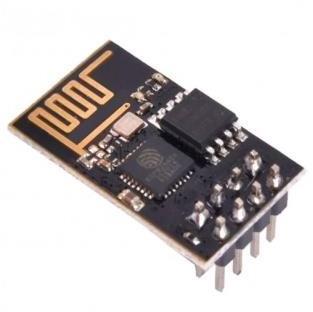
Serial WIFI Wireless Transceiver Module is a versatile and self-contained System-on-Chip (SOC) that comes with an integrated TCP/IP protocol stack, makingitanideal choiceforenablinganymicrocontrollerto connect to a Wi-Fi network. This module offers the unique capability of hosting an application on its own or delegating Wi-Fi networking tasks to another application processor, providing flexibility in system design. Equipped with a preprogrammed AT command set firmware, the ESP8266 module can be easily integrated with an Arduino device, granting it comparable Wi-Fi functionality to a Wi-Fi Shield right out of the box. One of the key advantages of the ESP8266moduleisitsaffordability,makingitacost-effective solutionforWi-Ficonnectivity.
2. DHT11 Temperature and Humidity Sensor:
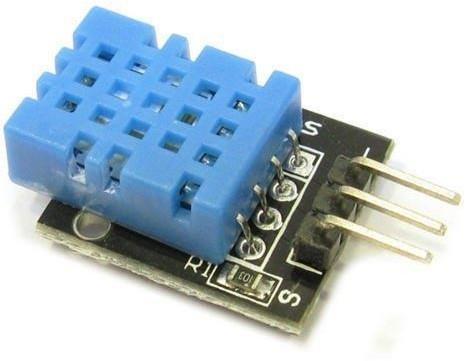
The DHT11 temperature and humidity sensor is a straightforward and cost-effective digital sensor and thermostat that accurately measures the surrounding air and delivers digital readings. Its simple design offers a single-wire serial interface, ensuring easyintegrationwith microcontrollers and other digital devices. For temperature measurement, the DHT11 sensor exhibits reasonableaccuracy,offeringreadingswitharesolutionof 1 degree Celsius. Additionally, the DHT11 sensor proves itselfversatilebyalsoprovidinghumiditymeasurements. It can accurately measure the relative humidity of the environment and present humidity readings with a resolution of 1% RH. This capability allows users to monitor and respond to changes in both temperature and humidity,makingitvaluableforenvironmentalmonitoring andcontrolsystems.
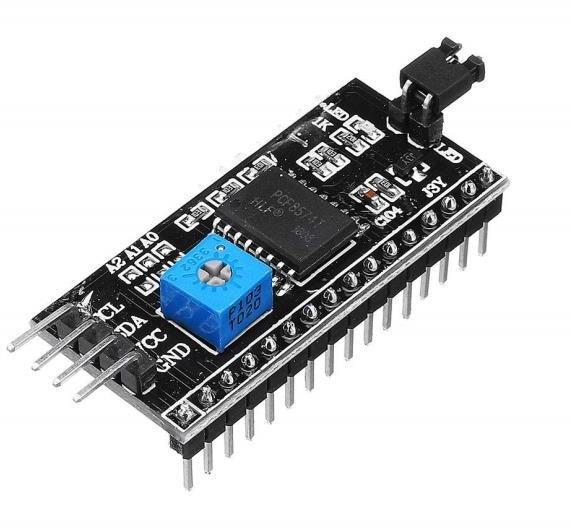

Although you can use a 204 LCD instead of 162 Liquid Crystal Display in our Arduino Board's I2C or 2- wire connection for this demonstration, for the 16x2 LCD's wiring.YoumayeasilycontrolanLCDwiththisI2Cmodule byconnectingtwowirestoyourArduinoboard'sinputSDA andtheSCL.Seethediagramabovetodeterminewhichpin is the proper one to connect your I2C module to. Four pins are located on the module's left side; two of them are for voltageandgroundandtheothertwoareforthe12c(SDA/ and SCL). The board features a tripper pot to change the LCD's contrast, and the jumper on the opposite side of the boardpermits.
A Liquid Crystal Display (LCD) is a display device that utilizes liquid crystal technology to present visual information. In the realm of electronics-based real-world applications, a reliable medium or device is essential to showcase output values and messages. Among the widely used LCD modules, the 16x2 LCD Module stands out, capableofdisplaying32ASCIIcharactersacrosstwolines. This module provides an efficient solution for conveying information in a compact and organized manner. The integration of LCDs in electronics-based applications enhancesuserinterfacesandaidsincreatingefficientand user-friendlysystems.
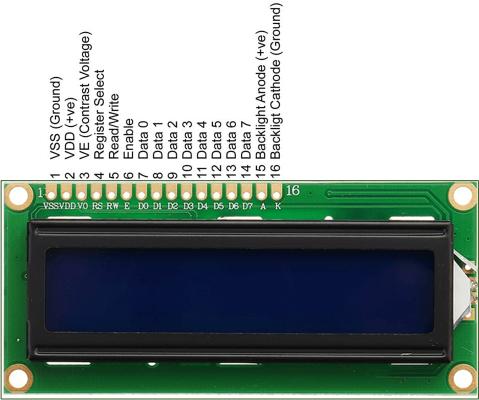
Breadboards typically come in four different sizes. Portions, twoofwhichareouterandtwoofwhichareinner.

In the interior parts, there are five rows of sockets that are electrically connected to one another. Normally, the breadboard'stwoouterpartsareutilizedonlyforpower.

A jumper wire, also referred to as a muumuu, muumuu line, or DuPont line, is an electrical conductor, or a series of them in a string, featuring connectors or legs at each end, or sometimes left "tinned" without connectors. Its primary purpose is to establish connections between various points on a breadboard, prototype circuit, or test circuit, either internally or with other components or circuits, without the need for soldering. Individual jump cables are equipped with "end connectors," which can be easily inserted into designated slots on a breadboard, a circuit board's title connector, or a piece of test equipment, enabling convenient and quick setup of connections. Jumper wires play a fundamental role in simplifyingtheprocessofcircuitprototyping,testing,and experimentation, facilitating swift reconfigurations and adjustments without the complexities of permanent connections.
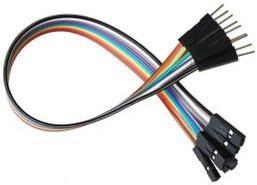

C. Software Requirements

TheArduinoIntegratedDevelopmentEnvironment (IDE), also known as the Arduino Software, is a comprehensive platformdesignedtofacilitatewritingandeditingcodefor Arduino-based projects. It encompasses various essential components, including a textbook editor tailored for programminginthecontextoflaw,acommunicationarea for seamless interaction with connected hardware, a textbook press for compiling and uploading code, and a user-friendly toolbar containing buttons for common functions.TheArduinoIDEservesasabridgebetweenthe user's computer and the Arduino board, enabling effortless program upload and real-time communication withtheconnectedhardware
2.
Visual Studio Code (VS Code) is a versatile integrated development environment (IDE) developed by Microsoft, cateringtodevelopersacrossWindows,Linux,andmacOS platforms.
Packed with an array of powerful features, VS Code offers comprehensive support for debugging, syntax highlighting, and intelligent code completion, streamlining the coding process and enhancing productivity. The IDE also boasts additional functionalities, including snippets, code refactoring tools, and seamless integration with Git for versioncontrol.
3. Notepad++:
Notepad++ is a widely used text editor and source code editor designed for Microsoft Windows users. One of its standout features is the tabbed editing functionality, which allowsuserstomanagemultipleopenfilesefficientlywithin a single window. The project's name, "Notepad++," draws inspiration from the C increment operator, reflecting its commitment to enhancing productivity and providing a seamlesseditingexperience
4. Google Firebase:
Google Firebase is a versatile and comprehensive platform that caters to various application types, ranging from AndroidandiOStoJavascript,Node.js,Java,Unity,PHP,C++, and more. This all-encompassing service offers hosting solutions for different application types, ensuring seamless deployment and management across multiple platforms. Firebase provides real-time and NoSQL hosting capabilities for databases, content, and other essential services. Its realtime database allows for instant data synchronization, enabling users to access the latest information in real-time withoutdelay
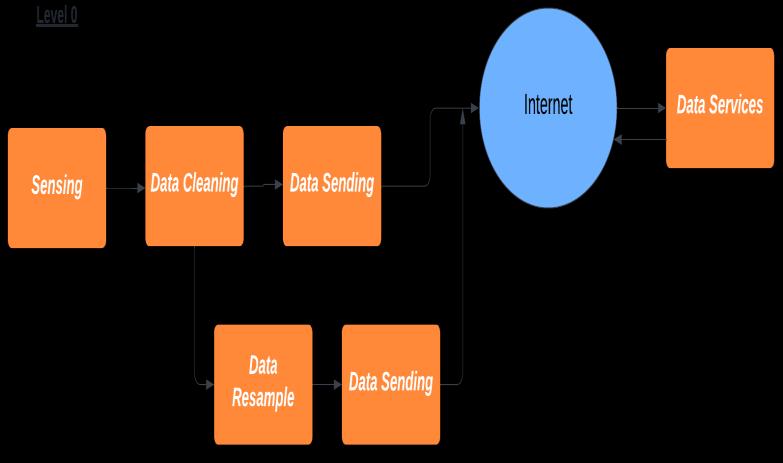
Theoutcomeoftheproposedsystemispromising,asallthe modules have been successfully developed, and the components have been seamlessly integrated. Rigorous testingof eachmodule wasconducted,and the results were favorable,ensuringthesystem'sreliabilityandfunctionality. In a controlled environment, the sensor readings were accurately received and stored in files as intended. By conducting additional studies in more realistic weather conditions, the proposed system's performance and accuracy can be further validated and optimized. The insightsgainedfromthesestudieswillenhancethesystem's reliability and effectiveness, making it a valuable tool for real-worldweathermonitoringandforecastingapplications.
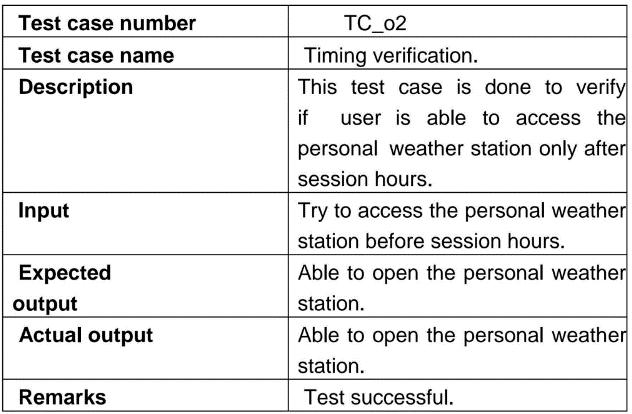


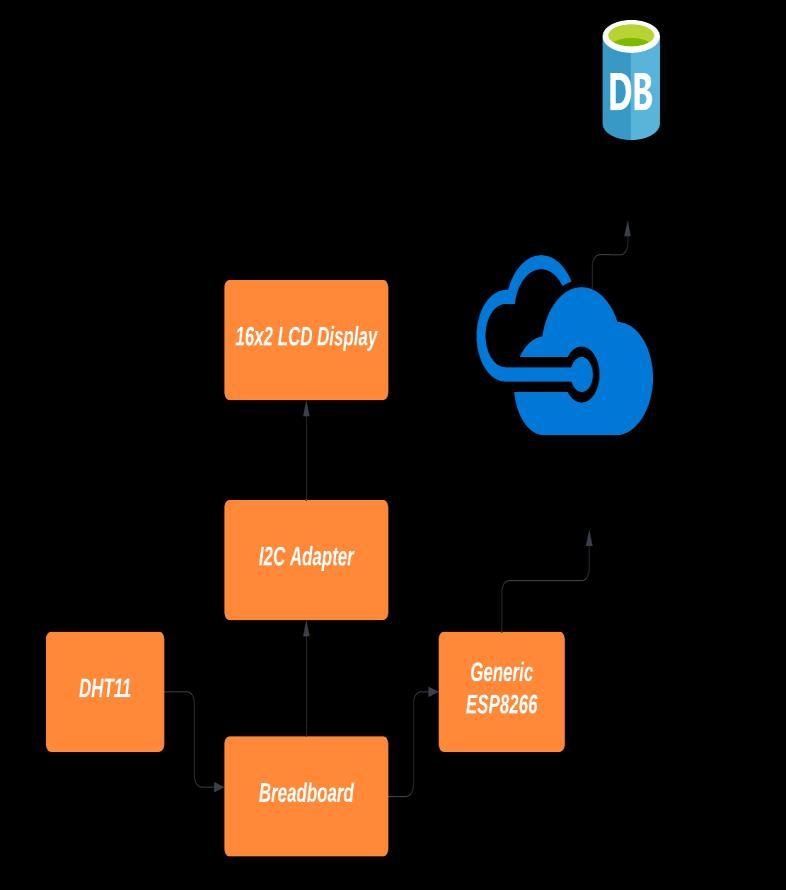
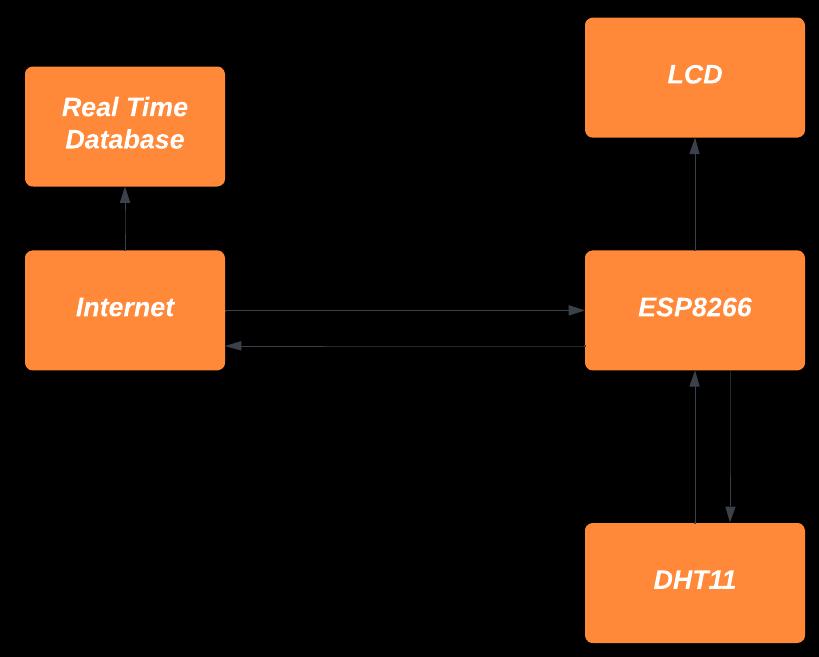


In conclusion, the Climate Station project "Using Internet of Things" (IoT) has successfully achieved its objective of providing users with real-time access to weather data from any location. Leveraging the power of IoT, the system has proven to be an appropriate and effective solution, as supportedbypreviousresearchanddiscussions.Theproject notonlyofferscurrentweatherdatabutalsoallowsusersto review historical information and interpret measurement trends,enablinginformeddecision-making.
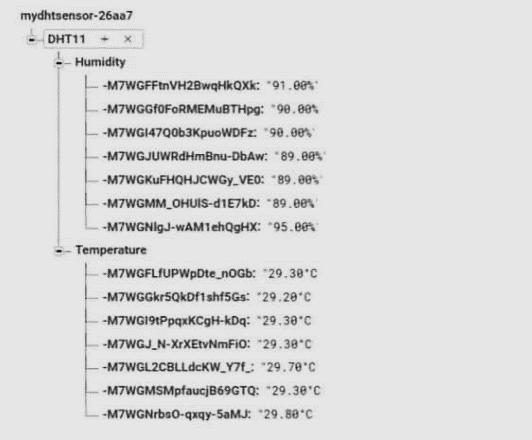
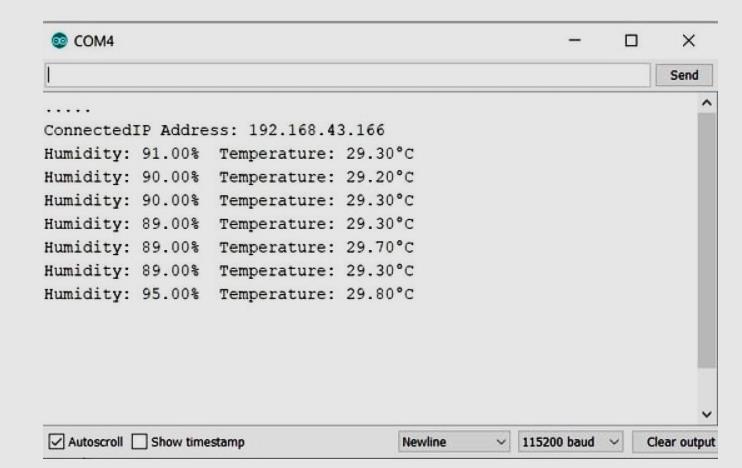
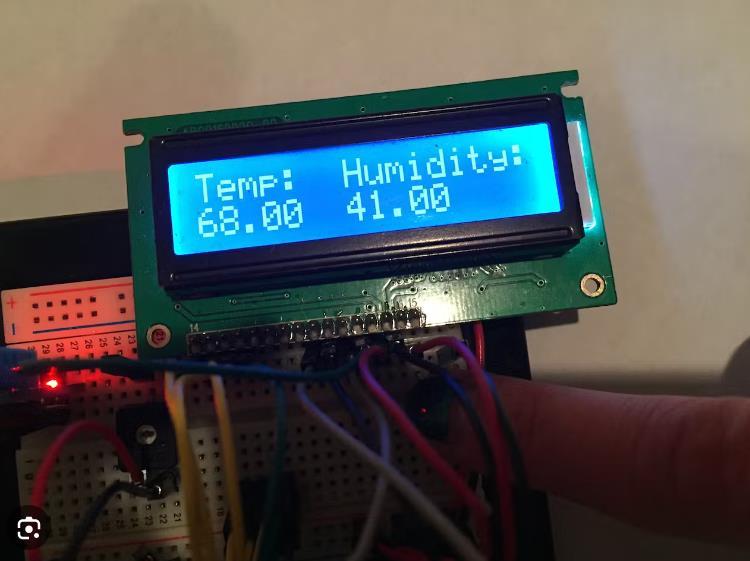
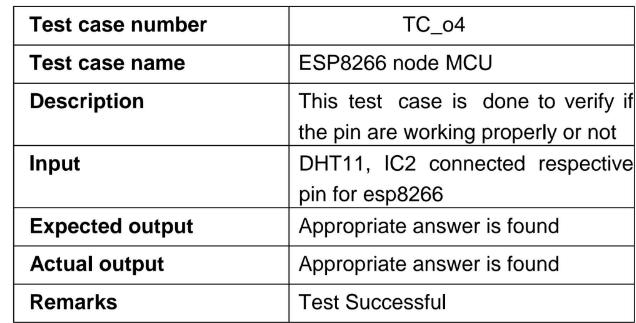
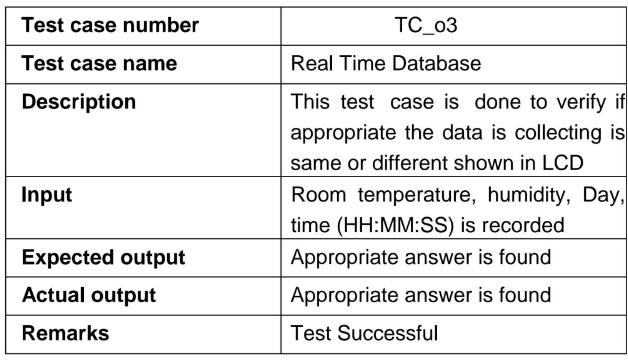
The system's ability to provide real-time alerts to users empowers them to plan their activities and respond to changing weather conditions promptly, potentially preventing emergencies and mitigating risks. It serves as a valuable tool in the agricultural sector, revolutionizing farmingpracticesandenhancingproductivityworldwide.


The Climate Station project has demonstrated the potential of IoT in weather monitoring and its significant impact on agricultureandfarmersglobally.
As technology continues to evolve, this project serves as a stepping stone towards harnessing the power of real-time dataforsustainableandefficientagriculturalpractices.With continuous improvements and advancements, the system holds the potential to play a crucial role in optimizing crop production, enhancing food security, and aiding farmers in adaptingtotheever-changingclimate.
10. ACKNOWLEDGEMENT
Theauthor wouldliketothank ProfessorSonaliAjankarfor providingherguidanceandvaluablesuggestions.
11. XI. FUTURE ENHANCEMENT
The following feature can improve the learning assistant project
In the future, sensors for gas detector-based air qualityanalysismaybeadded.
It is also possible to construct a web interface or service to provide data directly to an online platform
The Arduino board's connectivity can be expandedmuchfurther.
12. XII. REFERENCES

[1] Mohmadfurkan A. Sabugar (2021). Internet of Things(IOT)BasedWeatherMonitoringSystem.
[2] Amita M.Bhagat, Ashwini G.Thakare, Kajal A. Molke, Neha S. Muneshwar (2019). IOT Based Weather MonitoringandReportingSystemProject.
[3] Vinod B.Shende, S.B.Gaikwad,Vijay Aware (2020). RaspberryPibasedWeatherReportingSystemOverIOT.

[4] Esp8266 Configuration in Arduino: http://arduino.esp8266.com/stable/package_esp8 266com_index.json
[5] Ms. Archana Chaugule, Bhagyashree Kulkarni, Sanket Doke &Hitika Bhandari. SAKEC, Department of Information Technology IoT based Weather Monitoring System,IJIRCCE,October,2020.
[6] M.K. Nallakaruppan, U. Senthil Kumaran.IoT based Machine Learning Techniques for Climate Predictive Analysis
[7] Khan, S., Javaid, N., Haider, S., Islam, S. M. R., & Alrajeh, N. A. (2020). An IoT-Based Smart Weather Monitoring and Flood Detection System Using Machine LearningAlgorithms.Sensors,20(12).
[8] Khatib, T., Patil, A. S., & Harkut, D. S. (2020). Internet of Things Based Weather Monitoring System Using Wireless Sensor Network. 2020 International Conference onEmergingSmartComputingandInformatics(ESCI).
[9] Jain,P.,Kamboj,V.K.,&Sharma,M.(2018).AReview of Internet of Things Based Smart Weather Monitoring andControlSystems.2018.
[10] Sangeetha, S., & Manivannan, M. (2020). IoT-Based Smart Weather Monitoring System Using Raspberry Pi. 2020.
